#phototoxicity
Explore tagged Tumblr posts
Text

The Science Research Manuscripts of S. Sunkavally, p 513.
#high oestrogen levels#menses#hypothyroidism#phototoxicity#adiposity#toxins#phenylketonuria#levels of melanin#nystagmus#eye damage#atropine#ketones#substantia nigra
0 notes
Text

We offer the OECD-TG432 compliant In Vitro 3T3 Neutral Red Uptake (NRU) model assay for assessing drug-induced phototoxicity. This advanced testing method ensures accurate and reliable evaluation of phototoxicity potential, helping you meet regulatory requirements with confidence. Partner with us for your product development!
0 notes
Text
went to family dinner but left early cuz damn these stomach cramps are wild. & i have to take this 4 times a day for 10 days? i know i just got back from vacation but can i get a break from things happening to me
3 notes
·
View notes
Text
Re: blorbo from my research, here is my favorite ever case study. I'm obsessed with it.
Summary:
- Guy presents to neurology with muscle issues, very clearly has something going on but diagnostic tests are inconclusive
- History is mostly unremarkable. Key word, mostly. He drinks four liters of plain Earl Grey tea per day. For context this is nearly twice the recommended daily fluid intake. All fluids, to be clear, not just tea. He only drinks tea tho
- Bergamot is known to be phototoxic in high doses (reacts badly on your skin with sunlight)
- APPARENTLY nobody previously has consumed enough of it for it to be widely known that it is also, apparently, mildly toxic to ingest in high doses
- Guy starts drinking plain black tea again. Only 2 liters this time (he didn't have a medical reason to drink that much tea, he just liked it) and so now he's fully recovered
#truly a case study of all time#I'm deeply charmed by this stranger#i'm real and i beat myself up behind the Blockbusters
50K notes
·
View notes
Text
"My uh...whiff...is very faint thank you. Nothing a little bergamont, rosemary, and a hint of fine aged brandy can't hide. It's the perfect olfactory disguise for a corpse. Honestly, I think I missed my calling as a perfumer!" - Astarion to Shadowheart I don't know if anybody has analysed Astarion's perfume or if the ingredients were even thought of this hard by Stephen Rooney (I am kicking myself for not asking when I met him at MCM 2 weeks ago). I, however, have read about them and thought about them quite hard.
So, my findings and ramblings about Astarion's perfume:
Bergamot - From the bergamot orange. Ironically, it's phototoxic - it makes skin more sensitive to sunlight/UV damage so I guess you could say it's associated with the sun? I dunno if Astarion should be wearing it tbh...
I also saw the fruit called 'Aphrodite's apple' and 'the most beautiful fruit' but the source was kind of flimsy.
Rosemary - Used in funeral rites throughout history, it symbolises death and remembrance but also fidelity in love.
The Ancient Egyptians used it in their embalming process to mask the scent of death (makes sense that Astarion uses it to mask his faint whiff of undeath), and it used to be (and still is?) placed on or in graves.
It's also mentioned a bunch in Shakespeare's works, specifically in scenes to do with death, which is quite appropriate and ironic for this silver-tongued, theatrical vampire who hates poets.
FRIAR LAWRENCE:
Dry up your tears, and stick your rosemary
On this fair corse
- Romeo and Juliet
OPHELIA:
There's rosemary, that's for remembrance. Pray you, love,
remember.
- Hamlet
Aphrodite pops up again here because in some versions of her creation myth, she arises from the sea adorned with rosemary.
Brandy - A biiit of a stretch maybe but there is a category of brandy known as eau-de-vie - water of life - so-called because medieval alchemists would ascribe miraculous properties to alcohol such as immortality.
In the late 19th and early 20th century, brandy was also used as a cardiac stimulant (so an association with life?) because it seemingly increased cardiac output and blood pressure. Which doesn't really help Astarion in any way but hey he is wearing it, not drinking it or getting it injected up his butt (that was one way it was used to resuscitate patients apparently yeah idk).
SO basically, his perfume ingredients are associated with life, death, the sun, immortality, devotion in love, and maybe the Greek goddess of passion, pleasure, beauty, and sex.
It also smells amazing.
#thank u for coming to my ted talk#astarion#bg3#bg3 astarion#baldur's gate#my stuff#added in the quote bcos idk if everybody knows about the dialogue
104 notes
·
View notes
Text

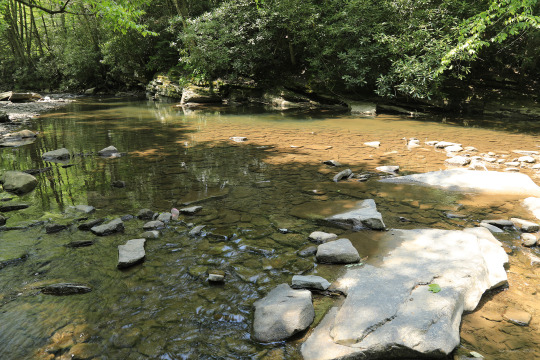
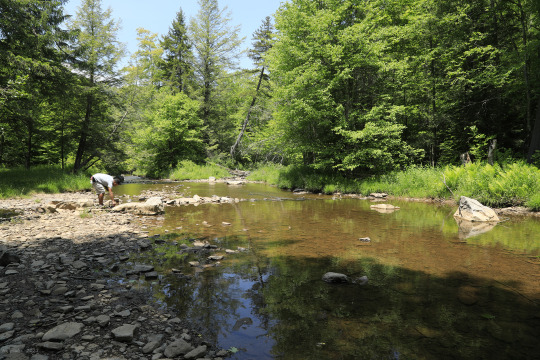
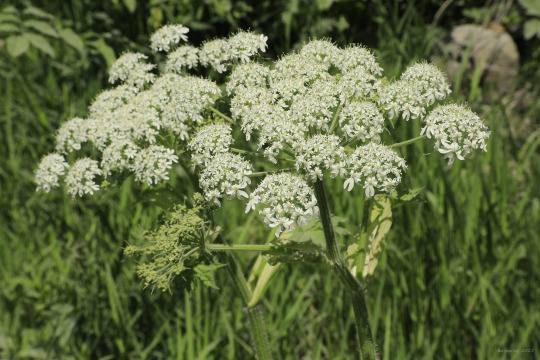
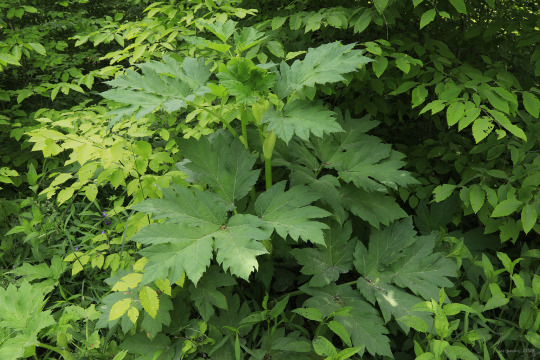
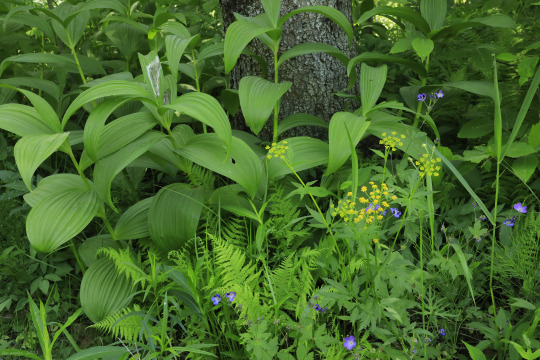
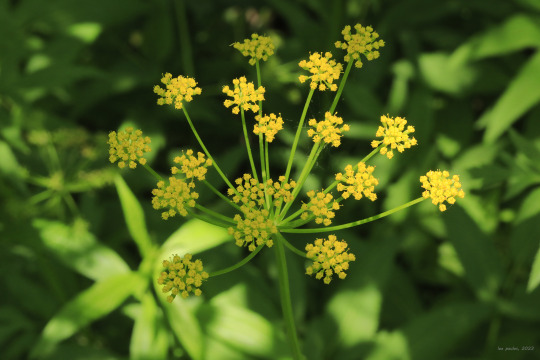

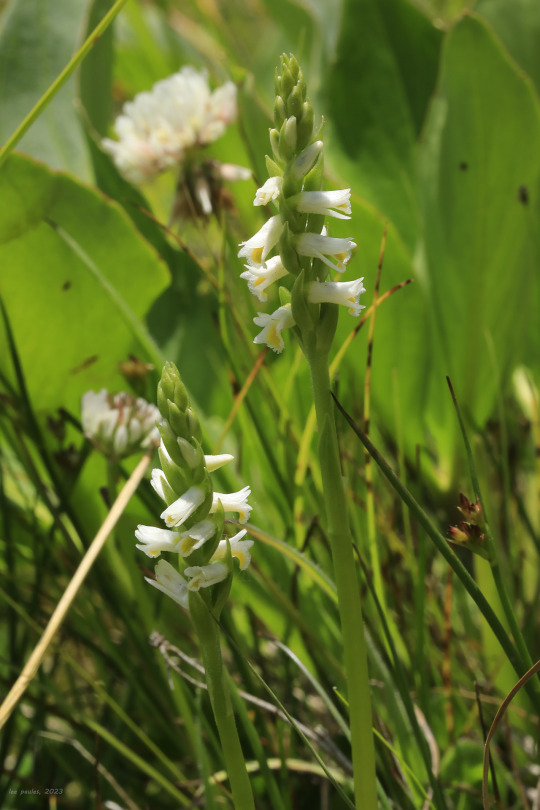
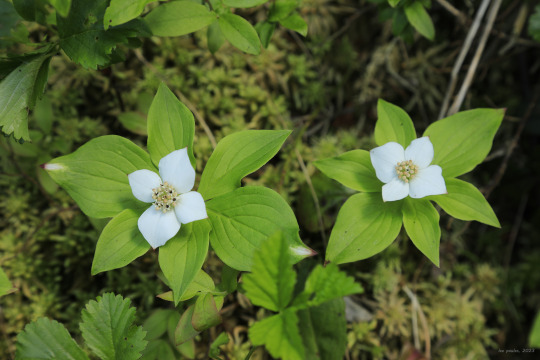

Day Date at Spruce Knob-Seneca Rocks National Recreation Area, Part 1. Most couples would probably equate a "date" to a nice dinner out and a Marvel adventure movie, but Blake and I, being hopeless nature fanatics and aspiring satyrs without hooves, equate it to mean "putzing around in the mountains". The timing was perfect: the haze from the Canadian wildfires, which has been choking most the US Mid-Atlantic and Northeast for the past week, had mostly moved on, replaced by a crisp blue sky with a light breeze.
From top: the view from the Rich Mountain Overlook on Old Route 33, heading toward Harman; Blake communing with the mystic creek chubs in Gandy Creek, one of the best brook trout streams in the Mid-Atlantic region; cow parsnip (Heracleum maximum), a mildly phototoxic beauty that Native Americans relied on for food and medicine; a forest composition of false green hellebore (Veratrum viride), ferns, wild geranium (Geranium maculatum), and golden Alexander (Zizia aurea); a close-up of golden Alexander, a lovely, spring-blooming member of the carrot family; the wetlands complex at Spruce Knob Lake; shining ladies' tresses (Spiranthes lucida), a spring to early summer-blooming bog orchid recognizable from its bright yellow labellum; bunchberry (Cornus canadensis), which can be easily mistaken for a spring-blooming forb but is actually a dwarf dogwood; and a feisty eastern garter snake (Thamnophis sirtalis sirtalis), whose saliva contains a mild neurotoxin that is deadly to its prey but harmless to humans.
#appalachia#vandalia#west virginia#wildflowers#spring#flora#allegheny mountains#monongahela national forest#spruce mountain#spruce knob lake#gandy creek#spruce knob-seneca rocks national recreation area#reptile#snake#eastern garter snake#cow parsnip#false green hellebore#wild geranium#golden alexanders#golden zizia#golden alexander#shining ladies' tresses#bunchberry#creeping dogwood#canadian dwarf cornel
133 notes
·
View notes
Text
Okay, I’m looking through a list of herbs for spellcraft, killing time at work, and folks.
You need to be
FUCKING
CAREFUL
So many of these lists refuse to acknowledge the chemical and biological realities of many of these plants. So allow me, your friendly neighborhood autistic witch with a special interest in POISONS to give some safety basics:
Firstly, just fucking google everything before you use it. Yes, everything. Did you know nutmeg is a toxic hallucinogen in high doses? You do now! Especially with how many plants are listed in herbiaries and grimoires by common name it is vital to learn that fly agaric (sometimes just listed as toadstool, which I would like to punch Scott Cunningham for) is amanita muscaria, which can make you trip balls and then kill you. Even just find the Wikipedia page for your herb. Does it have a “toxicology” section? That’s your first clue!
Okay, now you know what it is. You know you’re looking at berries from atropa belladonna, deadly nightshade. You should be safe as long as you aren’t stupid enough to eat them, right? WRONG. Many toxins can be absorbed through the skin and mucus membranes. Just because the blog you found only listed it with a tiny footnote saying not to eat it doesn’t mean you should handle it willy-nilly. Wear gloves. Wash your hands/tools/surfaces. Dispose (carefully) of every stray bit of plant matter that isn’t safely secured in a spell jar or something. Avoid burning anything, as toxins can be released in the smoke. Belladonna is the example here, but you should take this precautions with any toxic spell ingredient. Better safe than sorry.
Speaking of gloves, you might want to wear them with otherwise harmless ingredients too. Did you know citrus peels and juices contain phototoxic compounds? So do aliums (carrots, onions, garlic). If you’re doing your rituals in the Sun, you can get awful burns when the UV light hits those juices on your skin. Again, research your ingredients! Even if you think it’s stupid!
Now, if you want to use toxic herbs as entheogens, that’s at your discretion, but use A LOT of discretion. There are plenty of safe and legal psychoactive substances you can use without worrying about possibly killing yourself. If you’re determined to use a deadly plant, be VERY aware of any potential interactions with your medications or any physical or mental conditions. Be EVEN MORE aware what the effects of overdose and dangerous poisoning look like and SEEK MEDICAL ATTENTION. Also, when you get to the ER because you’re high on mandrake or whatever, tell them what the hell you took. Antidotes aren’t really a thing irl, but they need to know what sort of supportive care you need to best recover.
This is far more immediate and serious than a spell backfire or impostor spirit or whatever people try to fear monger about in witchy spaces. A bad interaction with powerful toxins can and will cause illness and death. This information should always be on your mind for basic, mundane safety, second only to fire safety (and only second because you’re gonna be dealing with it less often)
Do your research and don’t die!
#witchcraft#witchcraft safety#poisonous plants#google is free#this isn’t even getting into how herbs that are safe for you might be deadly to your pets#that’s a different post#but an equally important one#witchblr#witch blog
21 notes
·
View notes
Text
Essential Oils: Bergamot Citrus bergamia

The following information is from Essential Oils for Beginners: The Guide to Get Started with Essential Oils and Aromatherapy by Althea Press.
DESCRIPTION This golden-green essential oil has a thin consistency and a fresh, citrus-like aroma with floral undertones. When used in aromatherapy blends, it is considered a top note.
ORIGIN Mediterranean countries, United States
PROPERTIES Analgesic, antibacterial, antidepressant, antiseptic, antispasmodic, astringent, carminative, deodorant, digestive, diuretic, expectorant, febrifuge, laxative, sedative, stimulant, tonic, vermifuge, vulnerary
APPLICATION Dilute by adding one part bergamot essential oil to four parts carrier oil. This essential oil is suitable for direct inhalation and ingestion, and for diffusion and topical application when diluted.
PRIMARY USES Alleviates painful skin conditions, including acne, abscesses, psoriasis, and boils; relieves itchy skin; balances oily skin; comforts coughs; reduces cold symptoms; soothes insect bites and cold sores; prevents halitosis; promotes feelings of peaceful relaxation; alleviates stress and anxiety. When used in meditation, bergamot essential oil can support healthful detoxification from drug and alcohol addiction and aids in smoking cessation.
SAFE USE Bergamot essential oil is generally considered safe; however, it is not recommended for use with children younger than five years old. Applying bergamot essential oil without diluting it first can cause skin irritation, and repeated use can lead to contact sensitization. It is extremely phototoxic; direct sunlight and UV light should be avoided for as long as seventy-two hours after use.
#nature witch#green witch#green witchcraft#cottage witch#witch community#pagan witch#witchblr#pagan community
33 notes
·
View notes
Text
Beltane Blessings Anointing Oil
"Celebrate the Celtic May Day festival with this blend.
5 drops lavender essential oil (Lavandula angustifolia) for love, health, peace
5 drops patchouli essential oil (Pogostemon cablin) for energy, sex, aphrodisiac, grounding
5 drops tangerine essential oil (Citrus reticulata) for physical energy, joy, purification
1/4 cup carrier oil
Blend all essential oils in a glass or nonreactive bowl. Add carrier oil, and mix well. Store in a glass bottle.
Use to bless and purify anyone entering sacred space who is not allergic to any of the ingredients. Use with care, and print a copy of the ingredients to have on had in case of allergy. Tangerine essential oil is reported to be non-phototoxic but can still present sensitivity issues in some. Use with care."
-Blackthorn's Botanical Magic by Amy Blackthorn
NOTE: Essential oils and absolutes can be expensive, and this book has shown to present a few costly recipes, so take them with a grain of salt. I personally use oil infusions rather than essential oils because of chemical sensitivity, and it tends not to be of high cost comparatively. I take all of these recipes as a suggestion of correspondence rather than something I absolutely must follow. It's better to get creative and use what you have on hand rather than spend a ton of money on some oils you'll only use once or twice.
#beltane#sabbats#wicca#wiccan#wheel of the year#oils#essential oils#celtic#gaelic#anointing oil#blessing#quotes
20 notes
·
View notes
Text
[I need somewhere to write worldbuilding info that isn't my outline document]
Mer Abilities in the Pirate AU
Sunlight-zone mer: Most mer in the story, notably Endeavor. They need sunlight for their powers and can only use them during the day, though all warriors are highly skilled in weaponry as well. Additionally, some extremely powerful mer like All Might and Endeavor can use their powers to some extent at night, though they are greatly weakened. All Might was the exception to that rule, a mer so powerful that the sun was a bonus, not a necessity. Endeavor can shape and move water with enough force that it can flay the skin off of anyone it hits and cause massive destruction to his surroundings (basically, how he fights in canon but swap fire for water). Touya and Shouto, two of his sons, can do the same thing. Some particularly high-ranking mer from strong bloodlines can take human form.
Sunlight-zone mer cannot survive past a certain depth of the ocean. Their skin doesn't have the necessary pressure barrier and they cannot see in the dark very well.
Mer can have various magical abilities, but only the king and owner of the legendary One For All trident can command the seas themselves and all creatures within them.
Midnight-zone mer: These mer live deep in the ocean and there are very few of them compared to the Sunlight-zone mer. In fact, you could say that it's almost like they're a single family 👀.
These mer can survive at great depths of the ocean, but can come up to the sunlight-zone or even the surface at night. They can have a wide variety of other powers, but all Midnight-zone mer are sirens and have siren song abilities. Their powers, though great, can only be used in the darkness.
Midnight-zone mer are covered in a phototoxic skin coating and sunlight severely burns them. Because of this, mer from this zone do not hold royal power over other mer and tend to stay away from humans (except when using their siren powers). Some have the ability to take human form (and, by extension, protected human skin), but their photosensitive skin is always worse in mer form if that's the case.
Mer Interactions: Mer from the two zones can and do mate and form families together from time to time. Like most meetings between the groups, this takes place in the twilight-zone as it's a safe area for both types.
Cross-breeding can be dangerous, though it can be managed through careful marriages and magical intervention. If powers of one or both parties are weakened or removed through magic, or simply nonexistent, the drawbacks of both mer types have a lesser chance of forming a sickly and mismatched offspring. Only a total power-hungry idiot would deliberately choose a mate from the other zone with equally strong powers in an attempt to create the perfect warrior baby who could live and use their powers in all depths of the ocean, times of day, and on land 👀
But who would do such a thing, right?
7 notes
·
View notes
Text
Chemistry behind Giant Hogweed
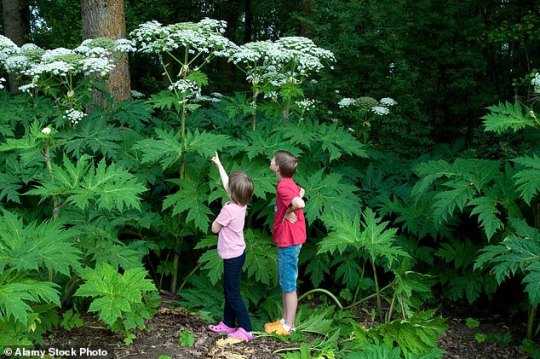
Giant hogweed (Heracleum mantegazzianum), also known as "cow parsnip," is a perennial herbaceous plant in the Apiaceae family. It is native to the Caucasus and Central Asia and was introduced to the United Kingdom as a horticultural plant in the 19th century. The entire giant hogweed plant contains furanocoumarin compounds, with the main components methoxsalen, psoralen, and bergapten🌿⚠️.

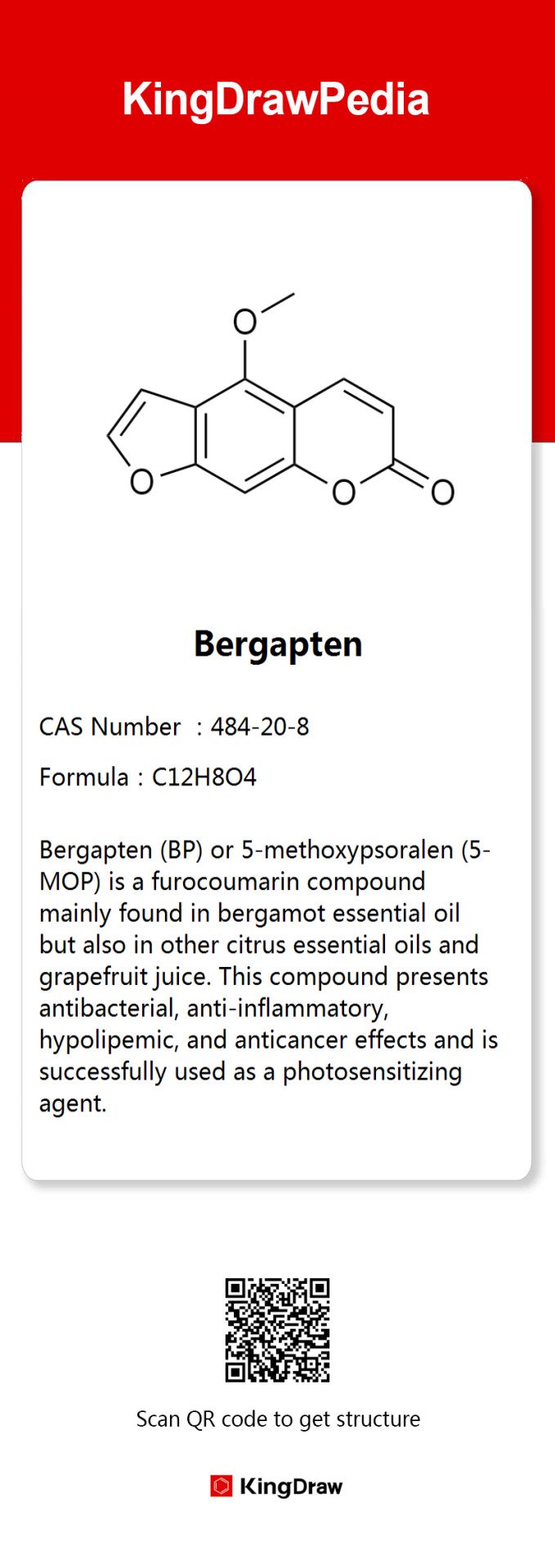
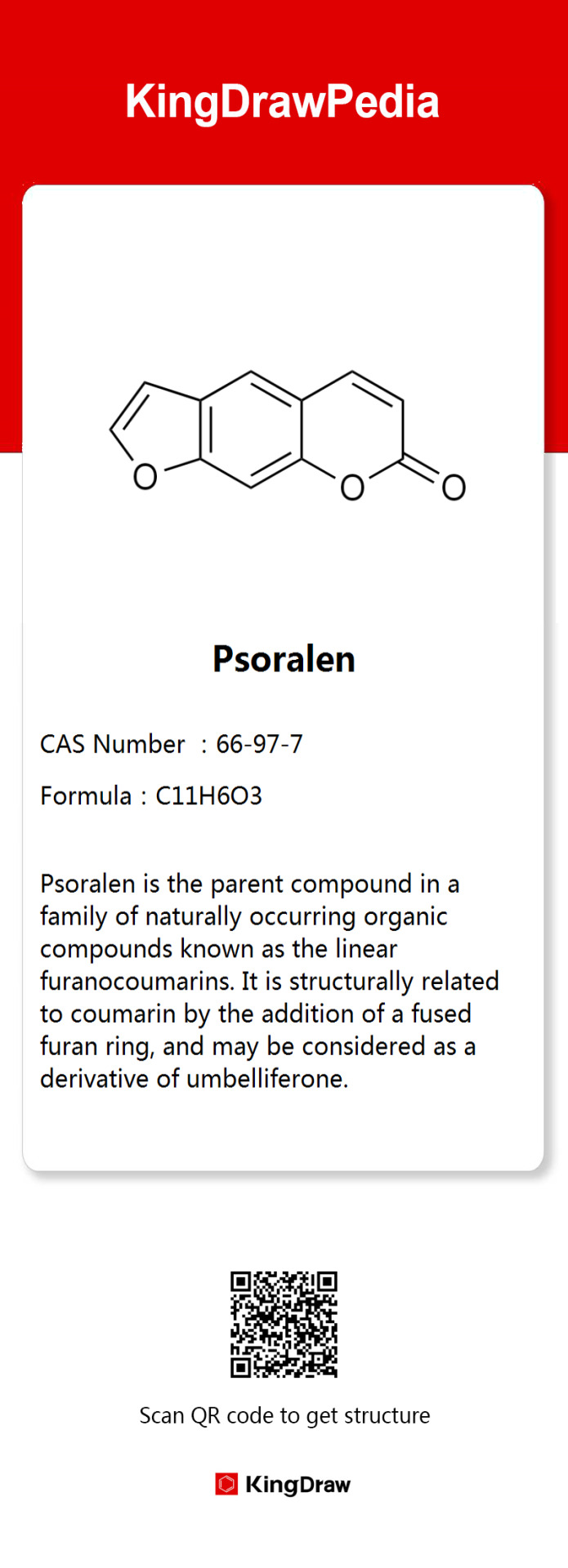
These compounds have a unique feature - they're phototoxic! 😱 When the plant's sap comes in contact with your skin and is exposed to sunlight (UV radiation), it can cause "phytophotodermatitis" - an intense reaction that resembles a burn. 🔥
The symptoms include redness, swelling, blistering, pigmentation, and scarring that can last for months. 😫If exposed to giant hogweed sap, the best course of action is to immediately rinse the affected area with a large amount of water, cover it with clothing to avoid exposure to bright light and seek medical advice from a healthcare professional if the symptoms are severe.
#giant hogweed#heracleum#plant#cow parsnip#organic chemicals#chemistry#science#compound#kingdraw#organicchemistry#molecule#toxic plants#take care out there#did u know#interesting facts
5 notes
·
View notes
Text
Lemon Essential Oil: The Zesty Solution for a Healthier You

Lemon essential oil, with its fresh, citrusy aroma, is a popular choice in aromatherapy and natural medicine. Extracted from the peel of fresh lemons (Citrus limon), this essential oil is packed with powerful antioxidants and offers a wide range of health benefits. In this blog, we will explore the many uses and benefits of lemon essential oil and why it deserves a spot in your wellness routine.
What is Lemon Essential Oil?
Lemon essential oil is obtained through cold pressing the peel of fresh lemons. This process preserves the oil's natural properties, resulting in a bright, zesty scent that is both refreshing and invigorating. Lemon essential oil is widely used for its ability to boost mood, improve skin health, and clean surfaces naturally.
Benefits of Lemon Essential Oil
Mood Booster: The refreshing scent of lemon essential oil is known to elevate mood and reduce stress. It can help alleviate feelings of anxiety, depression, and mental fatigue.
Skin Brightening: Lemon essential oil is rich in vitamin C and antioxidants, making it an excellent natural remedy for brightening the skin and reducing the appearance of dark spots and blemishes.
Immune System Support: Lemon oil has strong antibacterial and antiviral properties that can help strengthen the immune system. It can be used to fight off colds and flu, and to promote overall health.
Natural Disinfectant: Lemon essential oil is a powerful natural cleaner that can be used to disinfect surfaces, eliminate odors, and refresh the air in your home.
Improves Digestion: Lemon oil can support healthy digestion by stimulating the production of digestive enzymes. It can help relieve symptoms of indigestion, bloating, and nausea.
How to Use Lemon Essential Oil
Aromatherapy: Add a few drops of lemon essential oil to a diffuser to uplift your mood and create a refreshing atmosphere. It’s perfect for use in the morning to start your day on a positive note.
Skin Care: Dilute lemon essential oil with a carrier oil and apply it to the skin to brighten your complexion and reduce the appearance of dark spots. Always use sunscreen after applying lemon oil as it can make your skin more sensitive to sunlight.
Household Cleaner: Mix lemon essential oil with water and vinegar to create a natural disinfectant for cleaning countertops, sinks, and other surfaces. It’s a great way to keep your home clean without harsh chemicals.
Inhalation: For an instant mood boost, inhale the scent of lemon essential oil directly from the bottle or by placing a few drops on a tissue.
Precautions and Considerations
Lemon essential oil is phototoxic, meaning it can increase your skin's sensitivity to sunlight. Always dilute it before applying it to the skin and avoid direct sun exposure after use. It should be stored in a cool, dark place to preserve its potency. As with any essential oil, perform a patch test to ensure there is no allergic reaction.
Conclusion
Lemon essential oil is a versatile and powerful oil that offers a wide range of benefits for your health, skin, and home. Its ability to uplift mood, improve skin health, and naturally disinfect surfaces makes it an essential addition to your wellness routine. By incorporating lemon oil into your daily life, you can enjoy its refreshing and rejuvenating effects.
0 notes
Text
manage stress
Fitzpatrick at first fostered a scale in view of an individual's skin and eye tone to decide how much UV treatment used to treat skin sicknesses without phototoxicity or disturbance from UV light.
It has been utilized by clinical experts to survey the gamble of sun-related burns and skin malignant growth. It was estimated that people with low FSP and lighter manage stress complexions required more limited openings than people with higher FSP and hazier complexions.
The scale is as yet used to decide the portion of photograph treatment, UV, or laser treatment a believed source might have to treat specific skin conditions.
The ongoing scale characterizes skin from type I to VITTrusted Source. Type I alludes to skin that generally consumes, while type 6 alludes to skin that won't ever consume. As a rule, a low FSP implies that an individual's skin consumes more effectively than it ought to. A high FSP implies an individual's skin doesn't consume without any problem. manage stress
0 notes
Text
Nature's Essence: Top Aromatherapy Picks for Health and Wellness
Aromatherapy has long been celebrated for its ability to improve psychological and physical well-being by using natural plant extracts. As we navigate through the complexities of modern life, the search for the best aromatherapy products to enhance our health and wellness becomes more pertinent. In this comprehensive guide, we'll explore the essential aromatherapy products that stand out for their quality, efficacy, and ability to harmonize body and mind.

Understanding Aromatherapy and Its Benefits
Aromatherapy involves the use of essential oils extracted from flowers, herbs, and trees for therapeutic purposes. These oils are typically inhaled or applied topically to the skin. The practice is rooted in ancient traditions and has garnered a following in contemporary wellness circles for its numerous health benefits. These include stress reduction, improved sleep, enhanced mood, and alleviation of pain.
Essential Oils: The Heart of Aromatherapy
The Role of Essential Oils in Health and Wellness
At the core of any aromatherapy routine are essential oils, highly concentrated plant extracts that capture the plant's scent and flavor, or "essence." Known for their potent aromatic properties, these oils can significantly impact our mental state and physical health when used correctly.
Choosing High-Quality Essential Oils
When selecting essential oils, quality is paramount. Look for oils that are pure, organic, and sourced ethically. The best aromatherapy products will have clear labeling of their ingredients and origins, ensuring that you are using only the finest materials in your aromatherapy practice.
Top Essential Oils for Everyday Use
Each essential oil offers unique benefits. Here are a few popular choices that can be easily incorporated into your daily routine:
Lavender: Renowned for its calming effects, lavender oil is ideal for reducing stress and promoting a good night's sleep.
Peppermint: Known for its invigorating properties, peppermint oil can enhance concentration and soothe headaches.
Eucalyptus: Often used for its respiratory benefits, eucalyptus oil can help clear nasal passages and boost immune health.
Tea Tree: With its antimicrobial properties, tea tree oil is excellent for skin health and can be used to treat acne and other skin conditions.
Incorporating Essential Oils into Your Daily Routine
Aromatic Diffusion
One of the simplest ways to enjoy the benefits of essential oils is through diffusion. Using an oil diffuser, you can disperse the oil's particles into the air, creating a calming environment in your home or office. This method is particularly effective for stress relief and mood enhancement.
Topical Application
For more targeted benefits, essential oils can be applied to the skin. However, it is crucial to dilute them with a carrier oil, such as coconut or jojoba oil, to prevent skin irritation. This method is especially beneficial for pain relief, skincare, and supporting physical healing.
Safety Considerations in Aromatherapy
While aromatherapy is generally safe, it is essential to practice it with care. Always conduct a patch test before applying oils to the skin, and consult with a healthcare provider if you are pregnant, nursing, or have underlying health conditions. Additionally, some oils can be phototoxic (react negatively to sunlight), so it's important to be cautious when applying them before sun exposure.
The Best Aromatherapy Products on the Market
When it comes to finding the best aromatherapy products, there are several reputable brands that consistently stand out for their quality and commitment to sustainability. These products often combine multiple essential oils to create synergistic blends that maximize therapeutic benefits.
Recommended Aromatherapy Kits
For those new to aromatherapy, purchasing a kit can be a great start. Look for kits that include a selection of essential oils, a diffuser, and detailed instructions on how to use the products effectively.
Conclusion
Embracing the best aromatherapy products as part of your daily routine can profoundly impact your health and well-being. By choosing high-quality oils and incorporating them thoughtfully into your life, you can harness nature's essence to foster a balanced, harmonious existence. Whether you are seeking to alleviate stress, improve sleep quality, or simply enhance your home's atmosphere, aromatherapy offers a natural and effective solution.
1 note
·
View note
Text
Utilizing a Low Light USB 3.0 Camera to Enhance Your Life Science Experiments
In the biological sciences, accuracy and precision are critical. Scientists and researchers are always looking for new and creative techniques to improve their observations and studies. One such innovative device that's causing a stir in the industry is the USB 3.0 low light usb 3.0 camera. This cutting-edge imaging system transforms the way life science investigations are carried out by providing unmatched sensitivity in difficult illumination circumstances.
Recognizing the requirement for low-light performance
Imaging in low light is sometimes necessary for life science investigations in order to limit phototoxicity to living organisms or detect delicate biological processes. In these kinds of conditions, traditional cameras struggle and produce grainy or noisy photos. Low light USB 3.0 cameras have emerged to solve these issues, providing:
High Sensitivity: These cameras provide crisp, detailed images even in poorly lit environments thanks to their high quantum efficiency and low noise levels.
Broad Dynamic Range: They maintain the same level of image quality while capturing a wider range of light intensities, from weak signals to brilliant highlights.
Quick Data Transfer: These USB 3.0 cameras enable quick data transfer speeds, which are essential for real-time imagery and analysis.
Utilizations in All Life Sciences
The low light USB 3.0 cameras' adaptability spans multiple disciplines in the life sciences:
Imaging Cellularly
Imaging in low light is frequently necessary in cellular biology to observe subcellular structures in order to prevent cellular damage or fluorescence bleaching. Researchers can record fluorescence signals with remarkable clarity and low noise using low light USB 3.0 cameras, which is essential for monitoring cellular dynamics and interactions.
Using microscopy
Sensitive imaging tools are essential for microscopic examination. In low light, low light USB 3.0 cameras make it easier to see minute features in tissues and living things, leading to ground-breaking findings in the fields of developmental biology, pathology, and histology.
Chemiluminescence as well as bioluminescence
Very sensitive detectors are necessary for the study of bioluminescent or chemiluminescent reactions. The ability to precisely quantify enzyme activity, gene expression levels, and protein interactions is made possible by these cameras' exceptional ability to capture weak light emissions.
Benefits Compared to Conventional Cameras
The following are some clear benefits of low light USB 3.0 cameras over their predecessors:
Improved Signal-to-Noise Ratio: Higher sensitivity guarantees less background noise and crisper pictures, improving data accuracy and dependability.
Higher Frame Rates: Perfect for accurately portraying swift biological processes or dynamic events.
Compatibility and Integration Ease: There are very few workflow interruptions when using these cameras because they interact perfectly with current microscopy setups and analysis tools.
Selecting the Proper Camera for Your Project
When choosing a USB 3.0 low light camera, take into account important elements like:
Sensor Size and Resolution: Balance sensitivity and spatial resolution when matching camera specs to your experimental needs.
Software Capabilities: Verify that the image acquisition and analysis programs you use in your lab are compatible.
Cost-Effectiveness: Take into account the lifespan and maintenance needs of the camera when weighing the long-term advantages against the initial cost.
Innovation Case Studies
Utilizing low light USB 3.0 cameras, top research institutes and biotechnology firms are pushing the limits of scientific discovery.
Case Study A: To improve drug development procedures, a pharmaceutical business employs these cameras to track medication interactions in real time within living cells.
Case Study B: To expedite agricultural research, a genetics laboratory uses them for high-throughput screening of genetically modified organisms.
Upcoming Developments and Trends
The future of low light USB 3.0 cameras in the biological sciences appears bright as technology advances.
Integration with AI and Machine Learning: Better image processing skills will make it possible to automatically identify biological patterns and cellular architecture.
Miniaturization and Portable Solutions: Point-of-care diagnostics and field research will be made easier with smaller, more portable cameras.
In summary
To sum up, low light USB 3.0 cameras, which provide unmatched sensitivity and performance in difficult lighting situations, constitute a substantial leap in life science imaging. Through the use of these state-of-the-art technologies, you may maximize your experimentation and hasten the discovery of new scientific discoveries. Take advantage of the advancements in imaging technologies to advance your studies and leave a lasting impression on the life sciences.
Purchasing a low light USB 3.0 camera is a wise move if you want to improve medical diagnostics, investigate biochemical reactions, or study cellular dynamics. It will enable you to obtain sharper, more accurate pictures for your studies.
for more details visit below website
0 notes
Text

How to Use Photosensitive Essential Oils - Phototoxic Sun Safety Guide https://www.lovingessentialoils.com/blogs/essential-oil-tips/photosensitive-essential-oils?utm_source=dlvr.it&utm_medium=tumblr
0 notes